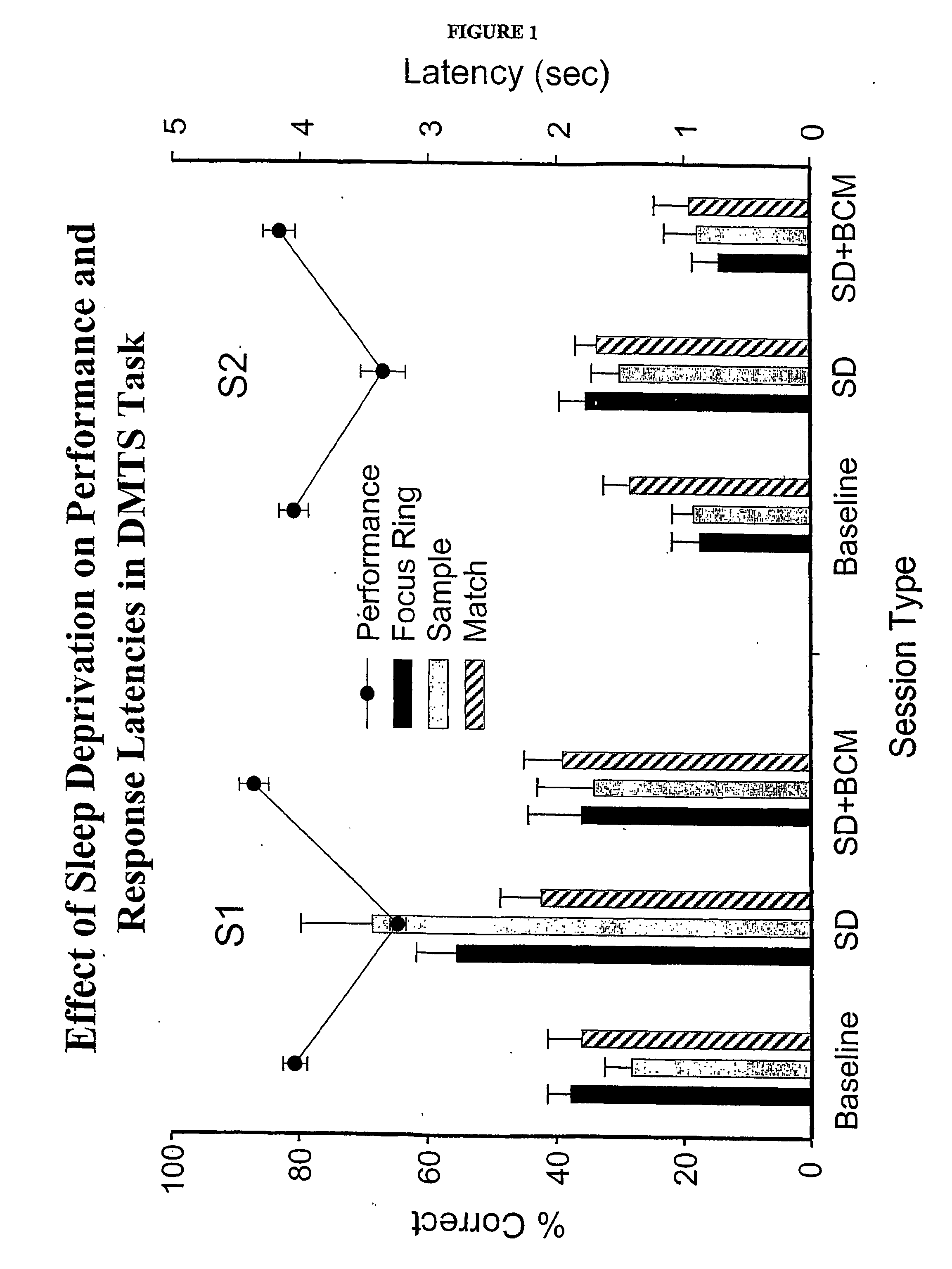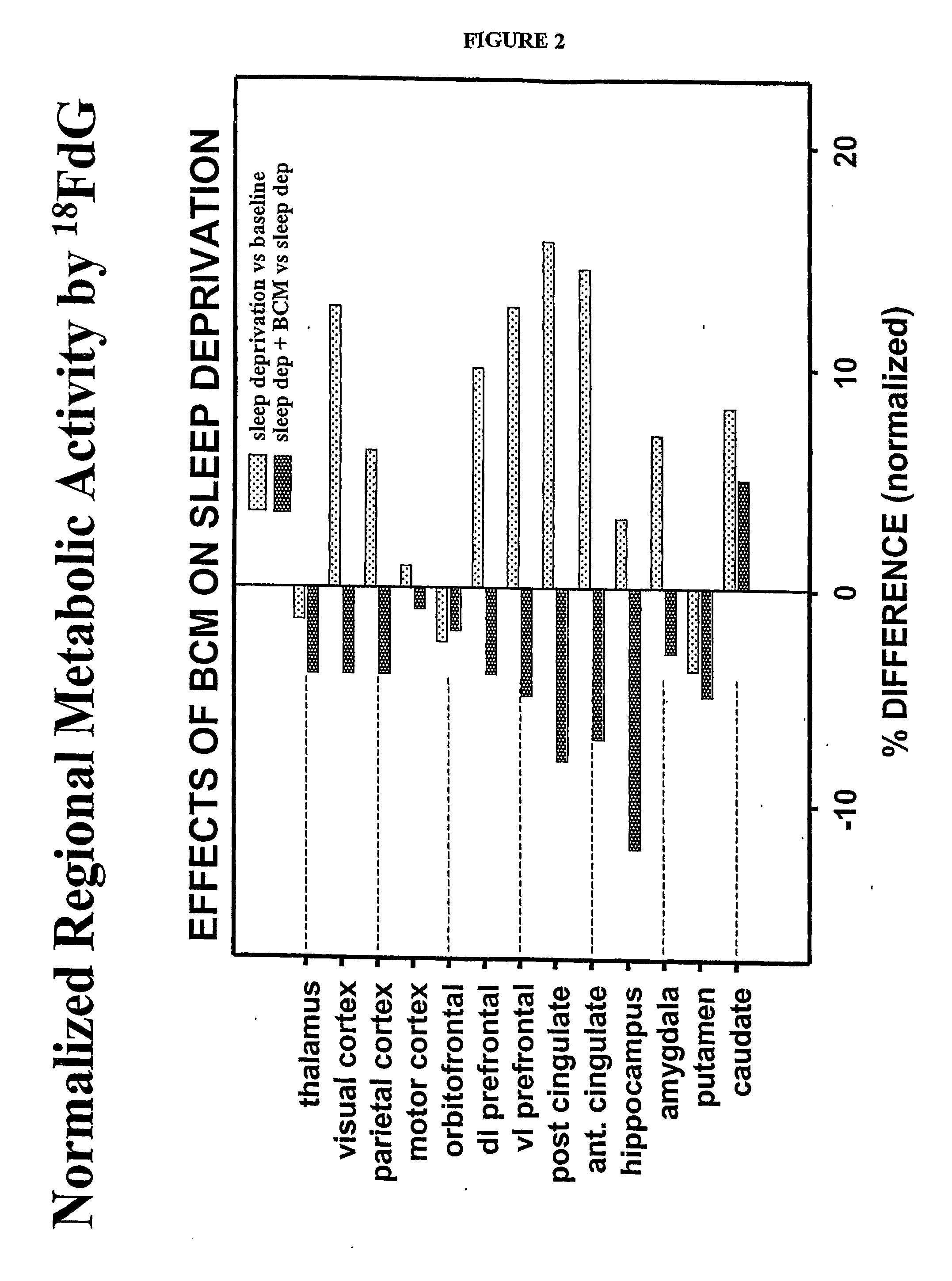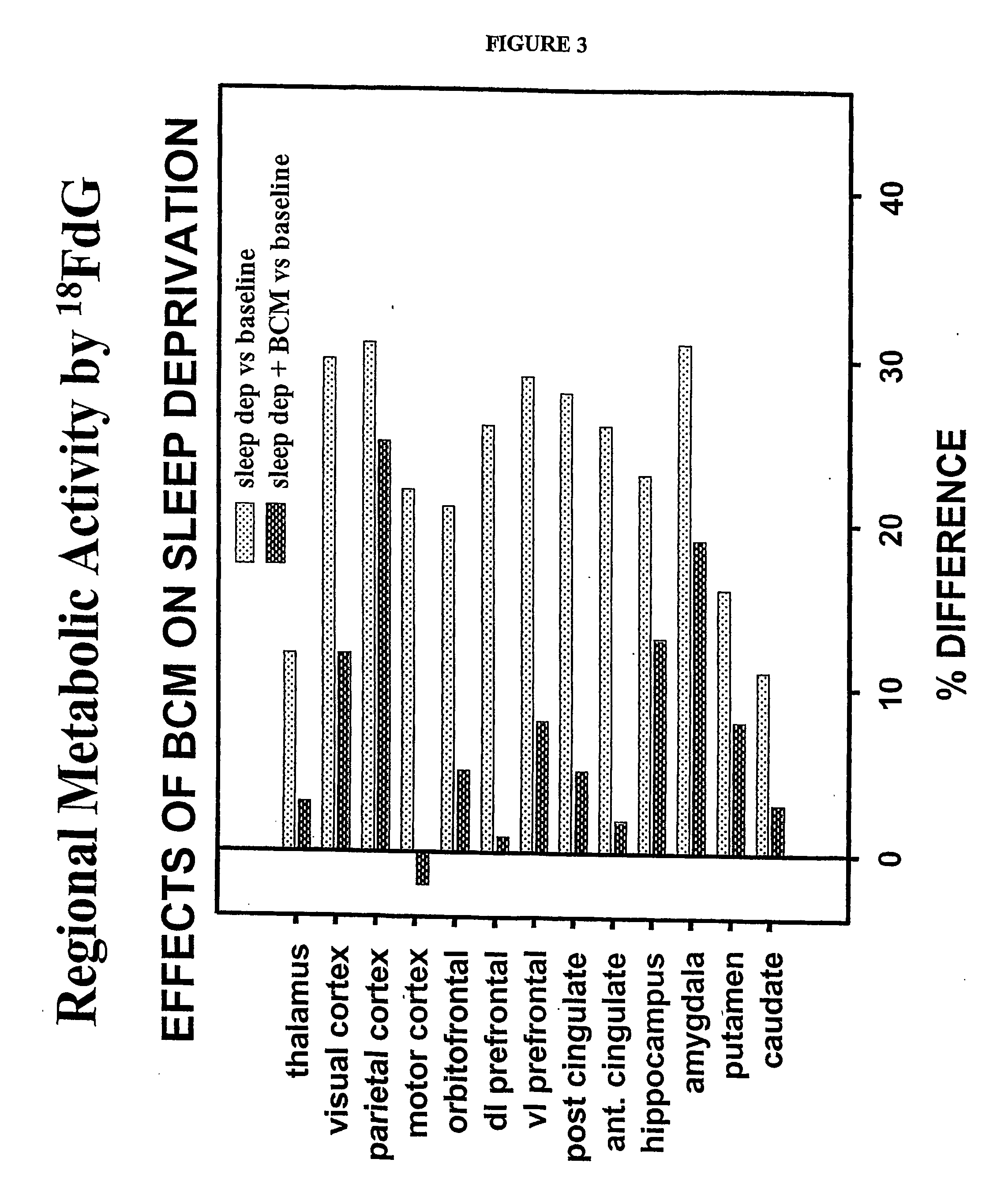Method of treating cognitive decline due to sleep deprivation and stress
a technology of applied in the field of treating cognitive decline due to sleep deprivation and stress, can solve the problems of affecting the ability to correctly process information, total or partial loss of sleep impairs the ability to concentrate, and the neural substrate of these deficits remains unclear, so as to improve memory performance, improve concentration, and improve the effect of serotonin metabolism
- Summary
- Abstract
- Description
- Claims
- Application Information
AI Technical Summary
Benefits of technology
Problems solved by technology
Method used
Image
Examples
Embodiment Construction
Definitions
[0027] Unless defined otherwise, all technical and scientific terms used herein have the same meaning as commonly understood by those of ordinary skill in the art to which this invention belongs. For purposes of the present invention, the following terms are defined below.
[0028]“Subjects” or “patients” herein are generally mammalian (dogs put in contemplated uses also as well as humans) and more particularly human subjects. The subjects or patients may be male or female and may be at any stage of development, including adolescent, adult, geriatric (aged), etc., with adult subjects being preferred.
[0029]“AMPA receptor modulators” as used herein and as further described in any number of patents / applications referenced herein, are pharmacologic agents that act on the AMPA subtype of glutamate receptors located on neurons and glial cells in the brain and CNS of a subject or patient. Positive AMPA receptor modulators (synonymously, “AMPA receptor potentiators or up-modulato...
PUM
| Property | Measurement | Unit |
|---|---|---|
| Electrical inductance | aaaaa | aaaaa |
| Composition | aaaaa | aaaaa |
Abstract
Description
Claims
Application Information
 Login to View More
Login to View More - R&D
- Intellectual Property
- Life Sciences
- Materials
- Tech Scout
- Unparalleled Data Quality
- Higher Quality Content
- 60% Fewer Hallucinations
Browse by: Latest US Patents, China's latest patents, Technical Efficacy Thesaurus, Application Domain, Technology Topic, Popular Technical Reports.
© 2025 PatSnap. All rights reserved.Legal|Privacy policy|Modern Slavery Act Transparency Statement|Sitemap|About US| Contact US: help@patsnap.com



